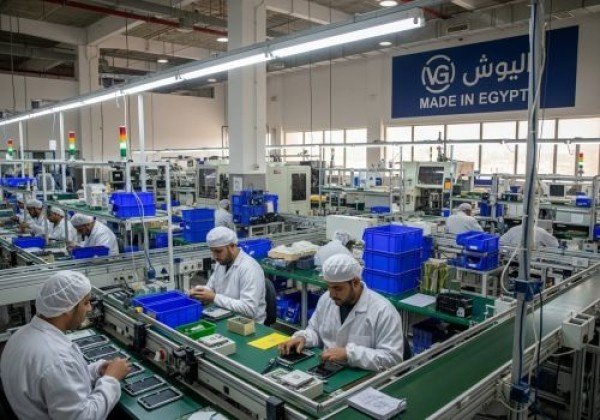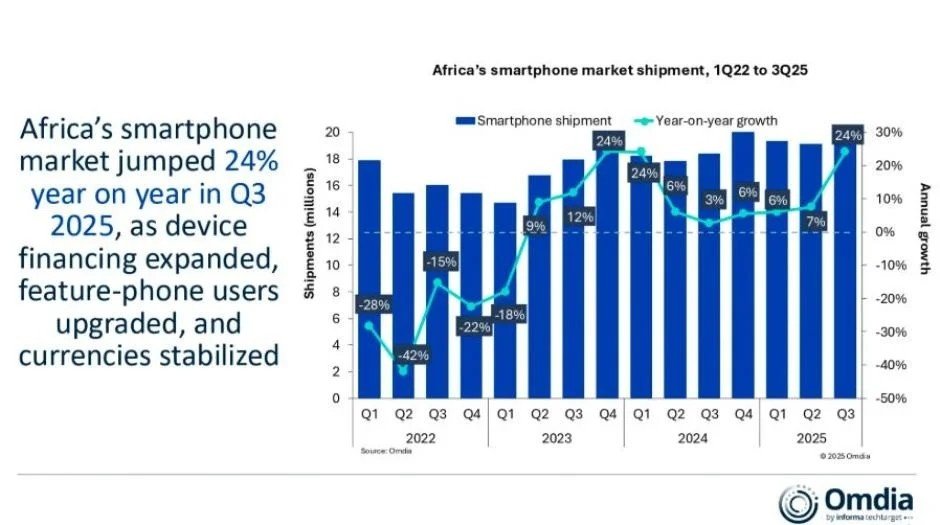For Egypt, scaling up local mobile handset assembly is more than an industrial strategy—it is central to driving digital transformation and inclusion. By making devices more affordable and accessible, the country is accelerating internet adoption, boosting its digital economy, and building the foundation for a future role as a regional electronics hub.
Market Growth Outlook
According to new industry forecasts by Fitch Solutions (August 14, 2025), Egypt’s handset sales are expected to climb from USD 2.5 billion in 2025 to over USD 4.8 billion by 2031, reflecting a CAGR of 11.4%. This growth is being fuelled by local assembly expansion, supportive government policies, and strong demand for low-cost smartphones.
Assembly Momentum and Investments
Once reliant on imports, Egypt is now home to assembly operations from global brands including Samsung, Oppo, Vivo, Xiaomi, and Nokia, alongside local pioneer SICO, which launched the country’s first domestically made smartphone, the Nile X, in 2019.
- Samsung rolled out its first “Made in Egypt” Galaxy A13 at its Beni Suef plant in 2022.
- Oppo and Vivo have invested USD 30M+ each in local factories.
- Xiaomi opened its first Middle East facility in 2023.
- Nokia partnered with SICO on joint assembly.
By 2024, Egypt’s installed production capacity reached 11.5M units annually, backed by over USD 87M in investment and creating 2,000+ jobs. Actual production, however, remains at about 3M units/year, just 26% utilisation, though forecasts expect utilisation to rise to 80% by 2031, leaving a 3.2M-unit capacity gap.
Shifting Trade Flows
Local assembly has reshaped Egypt’s trade profile:
- Imports of finished phones dropped from USD 1.8B in 2020 to just USD 54M in 2024.
- Imports of electronic components surged to supply assembly lines.
This aligns with the “Egypt Makes Electronics” initiative, which combines tariff hikes on finished devices with tax breaks for imported components to encourage domestic production.
Macroeconomic Drivers
- The Egyptian pound’s depreciation (from <EGP 20/USD in 2022 to >EGP 50/USD in 2025) has made imports costly, reinforcing demand for local devices.
- Inflation, which peaked during the 2022–2024 crisis, is projected to ease to 6.5% annually (2025–2031).
- GDP growth is expected to average 4.3% annually, supporting a stable, though price-sensitive, mass market—particularly for devices under USD 150.
Challenges Ahead
Despite progress, Egypt faces obstacles:
- Supply chain disruptions and customs delays.
- FX shortages and residual inflationary pressures.
- Low rural penetration due to limited incomes.
- Geopolitical risks, from Red Sea shipping disruptions to regional instability.
Strategic Potential
Closing the utilisation gap could unlock major value by not only meeting domestic demand but also driving exports to Africa and MENA. With Apple reportedly being courted for potential iPhone assembly, Egypt is positioning itself as a serious player in electronics manufacturing.
Digital Inclusion Impact
Affordable mobile phones are critical gateways to fintech, e-government, e-commerce, and online education, all fast-growing pillars of Egypt’s digital economy. Expanding local handset production will accelerate digital inclusion, create jobs, reduce import dependence, and strengthen Egypt’s place as a consumer and exporter of mobile technologies across Africa and the Middle East.















